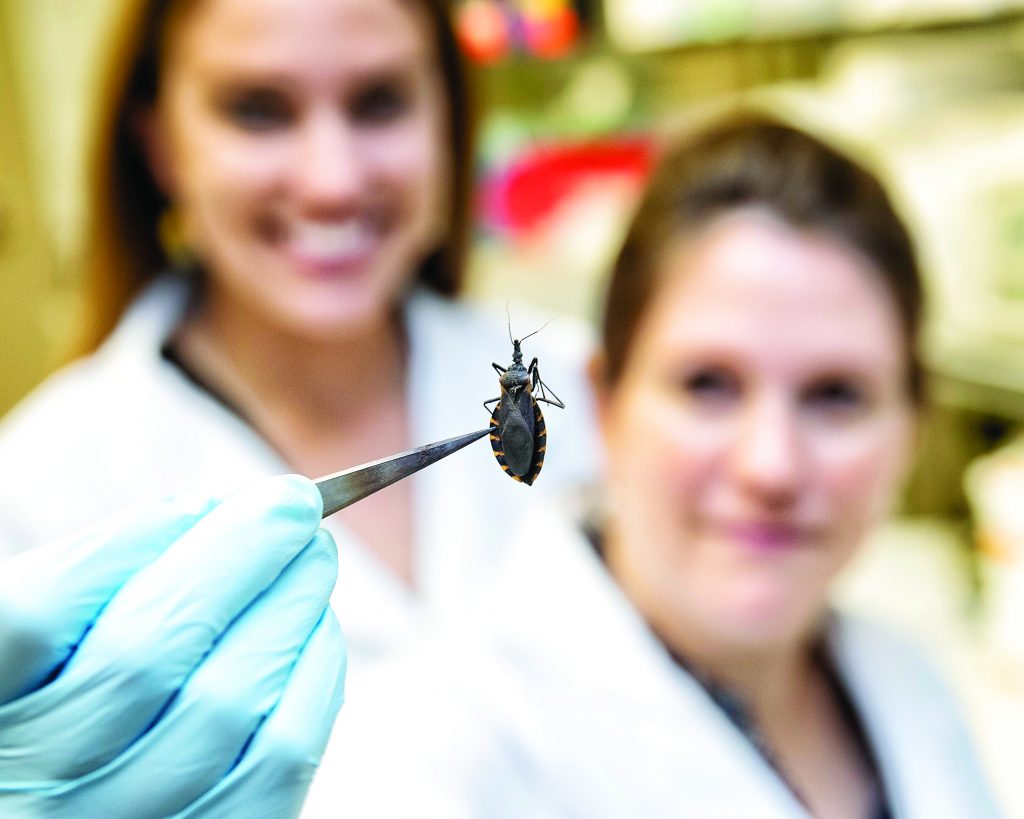How does Chagas disease affect DHS dogs on U.S.-Mexico border?

Dogs working at the US-Mexico border face daily obstacles as they endeavor to keep the country safe from terrorism and criminal trafficking, but a team of researchers at the Texas A&M College of Veterinary Medicine & Biomedical Sciences and its Small Animal Hospital is working to ensure that Chagas disease is not one of those obstacles.
Working with Ashley Saunders, a cardiologist at the hospital, associate professor Sarah Hamer and recent doctoral graduate Alyssa Meyers have spent the past four years examining the impending health implications of Chagas disease and the effect this disease has on the U.S. Department of Homeland Security (DHS) working dogs’ ability to work.
As a result of their early findings, last year, the team received DHS funding to complete the third phase of the study, which is also being done in collaboration with the Institute for Infectious Animal Diseases at Texas A&M.
Chagas disease, caused by the protozoan parasite Trypanosoma cruzi, is transmitted through kissing, or conenose, bugs. While Chagas disease has long been known in Central and South America, there is now increasing awareness for the disease in the southern United States where kissing bugs occur.
Hamer, Meyers, and Saunders all have devoted portions of their research to understanding the full impact of Chagas disease. When they began looking at government working dogs across the United States— and not just on the southern border— they found that approximately 7 percent were exposed to the parasite that causes Chagas disease.
“The DHS maintains more than 3,000 working dogs across the country, including the security dogs at the airports, customs and border protection dogs, Coast Guard dogs, federal protective service dogs, and secret service dogs,” Meyers said. “These are highly valuable dogs, often selected for their drive and pedigree, and, unfortunately, our initial research found that up to 18 percent of the working dogs along the Texas-Mexico border were positive for exposure to T. cruzi, the Chagas parasite.”
The team has narrowed the research to understand the long-lasting health implications of Chagas disease in these working dogs, a project that has required Hamer and Meyers to take trips to the border several times a year to assess the dogs while on the job.
“It’s pretty cool work because we’re intercepting these border patrol dogs while they’re working,” Hamer said. “We just want a glimpse, to take a blood sample, monitor their heart, and we want to put on a Fit Bark—which is like a Fit Bit, but for dogs—all while they’re still working and doing their normal jobs.”
Because Chagas disease can cause acute or chronic heart disease or death in dogs and humans, Saunders, who has worked with Hamer for years on Chagas-related research to help with the project, came aboard to evaluate the tests used to assess the dogs for heart disease.
Because there is no vaccination to prevent Chagas disease in humans or animals, and treatment is limited, Meyers said the team also plans to use this grant to focus on what can be done to control the kissing bugs and prevent transmission.
“Vector control includes things like clearing brush where kissing bugs can dwell from around kennels and houses, minimizing the use of light at night because kissing bugs are drawn to light, and securing access to kennels, to prevent bugs from getting in,” Meyers said.

